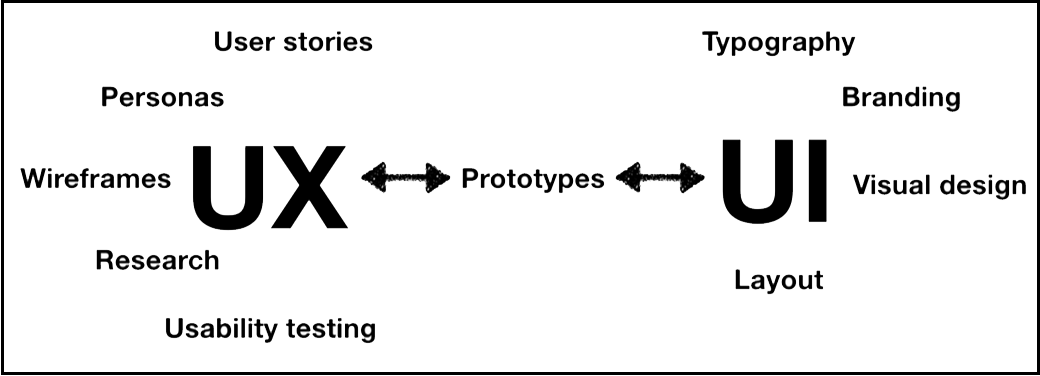
7 UX tips for Product Managers (by Dan Healy @danrhealy)
The worlds of product management and user experience (UX) are closer than they’ve ever been – especially for software-based products. If you want to deliver a product that your customers will love then you need to know about UX. But do you, as a Product Manager, really know about UX? Here are my 7 UX tips for Product Managers.
1. You are not the user
If you only take one of these tips away with you, take this one.
I’m still shocked by how many Product Managers I hear making decisions on their users’ behalf without having spoken to any. ‘Users will hate that!’, ‘Users will love that!’ – that sort of thing. If you want to know what your users will love or hate, ask them – stop guessing! Better than that – test an idea or prototype with them. Oh, and, start calling them customers, not users.
2. Understand what UX is and what it isn’t
UX isn’t just about making products look good. It’s about making products work beautifully because they meet the exact needs of the people that need to use them.
To achieve this, you’ll need the distinct-but-complementary skills of a User Experience (UX) Designer and a User Interface (UI) Designer.
The UX Designer’s job is all about finding out what customers need through research and then using this insight to create and test early designs (wireframes) with representative customers. These can then be developed into interactive prototypes that can be further tested and iterated upon.
It’s typically at this prototyping stage that a UI Designer can add the most value. They can help to transform the experience into something delightful through visual design, color, typography, layout, and branding. To get the best results, UX and UI Designers should work in close collaboration.
3. Don’t do it yourself
UX and Product Management are close but that doesn’t mean that the skills needed to perform each role are interchangeable. Don’t get me wrong, this doesn’t mean that Product Managers can’t create wireframes and UXers can’t have product ideas – it means that these things shouldn’t be done in isolation.
One of the most-challenging Product Managers I’ve worked with started our relationship by telling me that he would do all the customer research and it was my job to create wireframes that matched his expectations. This, of course, wouldn’t do. Instead, I convinced him to go out on the road together, meeting customers and carrying out guerrilla usability testing as we went. This led to one of the best working relationships I’ve ever had with a Product Manager and allowed us to deliver one of the best products in our industry.
4. Usable doesn’t mean valuable
As tempting as it is to allow a group of very smart people to lock themselves in a room to dream up the next new product for your organization, you need to make sure that you validate the idea with representative customers as soon as possible. If not, you could end up delivering something that you love but your customers just don’t get.
I remember working on a product for a company some years ago. My job as UX lead was to deliver the most frictionless e-commerce journey possible.
When it came to usability testing, the journeys tested well. When we asked customers whether they’d buy the product they said no. Why? It was because we, as a company, weren’t the sort of company that they would expect to buy the product from. It was a powerful lesson in learning that useable doesn’t mean valuable.
5. Your UXer is your friend
As a UXer, it’s very easy to feel unloved (sniff). After all, you’re the person that makes trouble, slows things down, and wants to change everything at the last minute, right? It doesn’t have to be this way.
If you involve them early enough, your friendly UXer can help you to deliver the kinds of delightful products that your customers will love so much that they’ll carry you through the streets on their shoulders. Well, maybe that’s going a bit far but you get the idea.
It’s also worth knowing that you can innovate through user-centered design. One of the best projects I ever worked on involved stripping a bloated Frankenstein’s monster of a product right back until there was almost nothing left. Customer research had told us what customers needed from the product. This, coupled with lots of iterative usability testing allowed us to deliver the biggest sale in the 17-year history of the company and a bunch of industry accolades, including a UX award. One industry pundit put it best when he said, ‘no-one is doing anything like what you are doing’. That felt pretty darn good.
6. There’s always time for usability testing
It’s a common myth that there’s no time for usability testing. There’s always time for testing – even if a product has gone live.
It’s better to have a backlog full of items that you know will help you continuously improve the product than a list of features that you think will delight your customers. Oh, and, you don’t have to have a usability lab.
7. Everyone’s a designer
A few years ago, I joined a company as its first-ever User Experience Designer. I’d been hired to work out why its flagship product has stopped selling.
On my first day, one of the developers introduced himself and shook my hand. ‘I’m so glad you’re here’ he said, ‘we’ve never had anyone design our software before’.
This was a great way to start my first day but it simply wasn’t true. Every time someone had written a word of copy, chosen a color, decided on where something should go within the product, they were making unconscious design decisions. All of these will have an impact on how easy to use your product is.
Recognizing that everyone who has input into your product is a designer is an important step to becoming a Product Manager who takes user-centered design seriously.
It also means that you can test ideas in their rawest form. Anything that can communicate the conceptual idea of your product is a design and worth testing – even if it wasn’t created by someone with the word Designer in their job title.
Summary
There we have it. As someone with lots of experience of working with products and Product Managers from a UXer’s point of view, taking these on board will make you a more customer-focused Product Manager and help you to deliver products that your customers will love.
Dan Healy (@danrhealy) is an award-winning Senior User Experience Designer and public speaker working at the cybersecurity company, Sophos. He’s been taming complex products for nearly 20 years.



Leave a comment